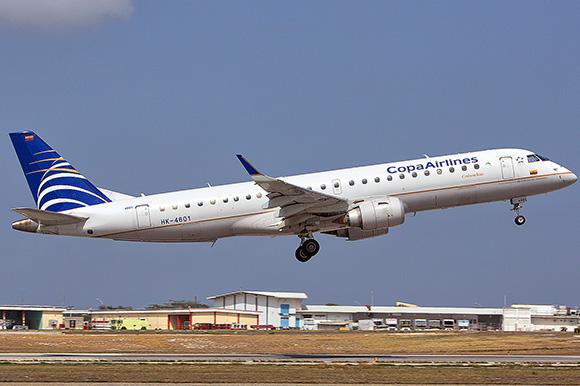
Panama’s Copa Airlines plans to operate 92% of 2019 capacity levels in the first half of 2022, citing rising leisure demand, increasing vaccination rates in Latin America and borders reopening after long COVID-19 closures.
The airline operated 49% of 2019 capacity in the 2021 second quarter, 70% in the third quarter and expects to hit 83% of pre-pandemic capacity in the fourth quarter.
Copa CEO Pedro Heilbron cautioned that the operating environment remains unpredictable and capacity adjustments may need to be made.
“Honestly, this pandemic has been very difficult to predict,” Heilbron told analysts this week while discussing the company’s $8.2 million third-quarter net profit. “Even three months ahead is like two years in normal times. So, demand came back [in the third quarter] and what we're seeing in [terms of demand over] the next few quarters is it is [growing] much faster and stronger than what we would have expected some months ago.”
Heilbron noted that the airline temporarily shut down all flying for part of 2020. “Since restarting operations in Q3 2020, we have increased flights from almost zero to nearly 70% of our pre-pandemic capacity in Q3 2021,” he said. “Going forward, we expect further relaxation of travel restrictions and a continued demand recovery, which should allow us to deploy additional capacity in the fourth quarter and 2022. But, of course, COVID has not gone away, and we’ve seen in other parts of the world that additional waves of the virus could affect demand in the future. So, we will remain focused and flexible in terms of capacity, adjusting our plans as needed.”
Heilbron said Copa’s Panama City (PTY) “hub of the Americas” model remains relevant in a post-COVID-19 world. “We have a proven and strong business model, which is based on operating the best and most convenient network for inter-Latin America travel from our hub of the Americas, leveraging Panama’s advantageous geographic position with the region’s lowest unit costs for full-service carriers,” he said.
The Copa CEO said the “big drivers” of current demand are “leisure and VFR traffic, more so than business traffic.”
Heilbron added: “Before the pandemic, that breakdown of traffic for us was about a third each segment. And now there’s probably more of a 40% leisure, 40% VFR and about 20% business breakdown—business is off versus where it was before . . . Today, [demand is] more people wanting to go on vacation after being locked up for a long period of time . . . We are seeing no signs of demand slowing down.”
Interestingly, Heilbron does not believe the consensus industry position that traffic is rebounding because of “pent-up demand” is quite accurate. “I'm not sure I would call it pent-up demand,” he said. “What we’re seeing is that people want to fly and travel like they did before the pandemic . . . We are not seeing the fear of traveling that we expected maybe a year ago or nine months ago . . . It’s just people going about their business, going about their lives, and getting out and traveling as much as they can afford to or want to.”
Photo credit: joepriesaviation.net
